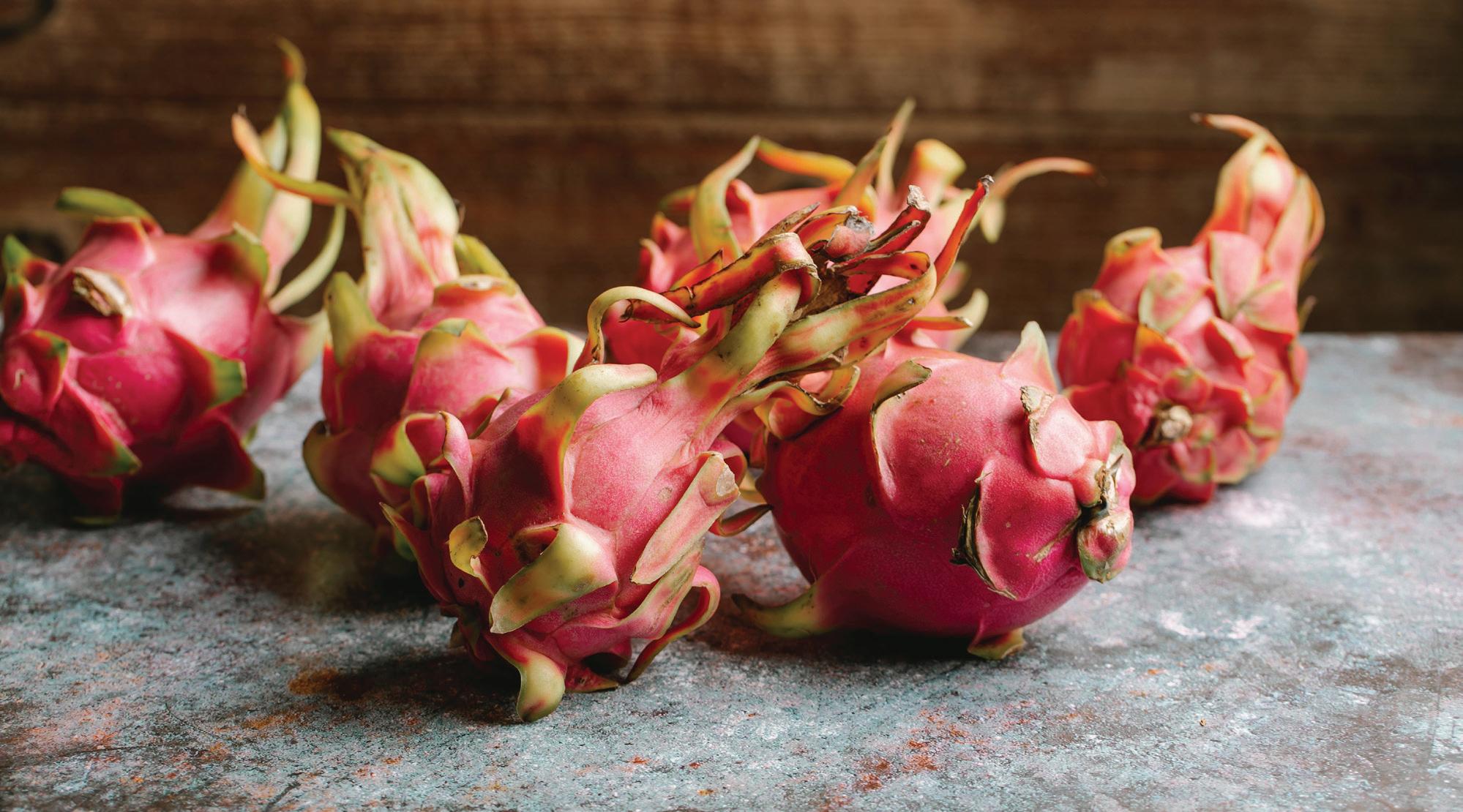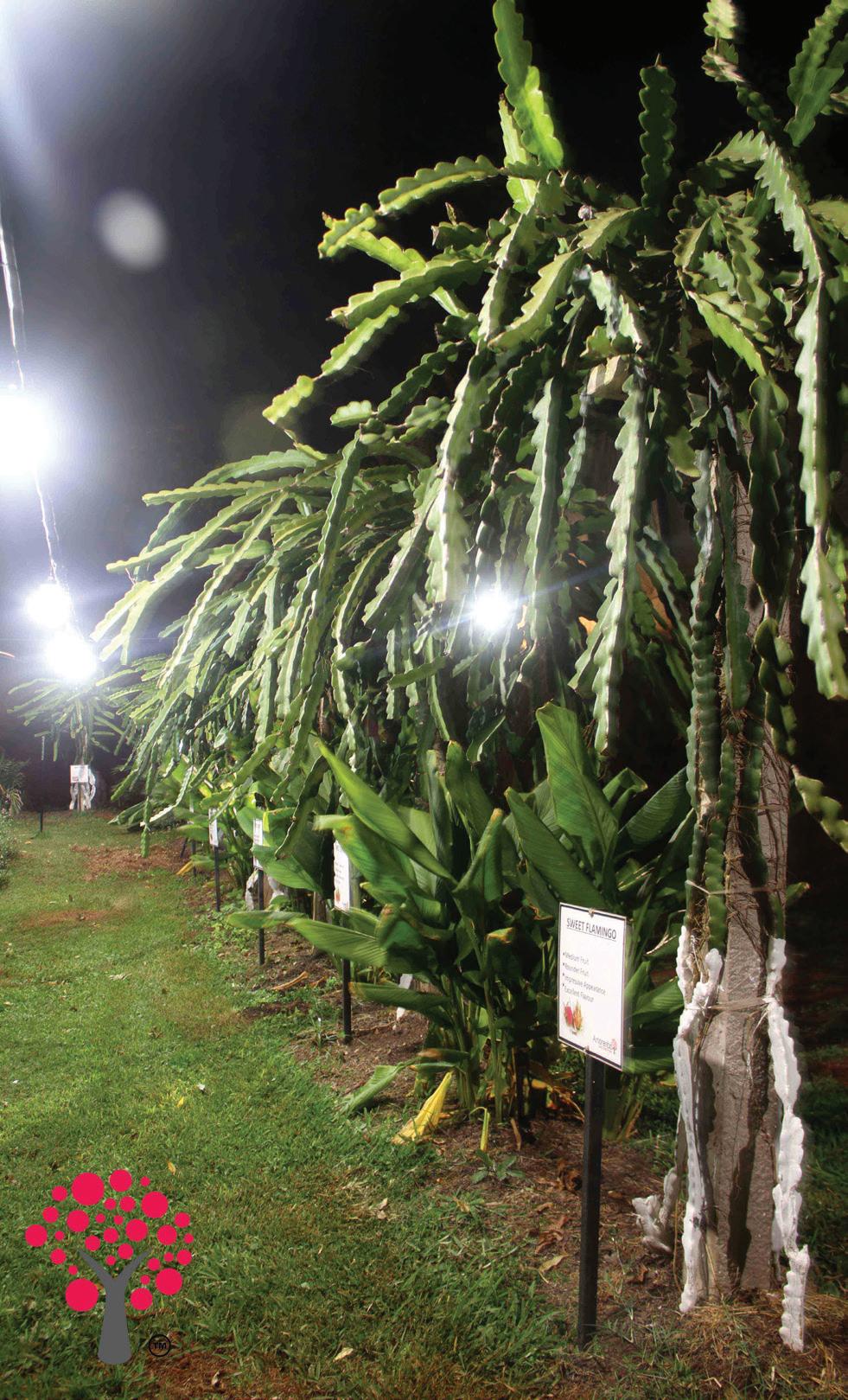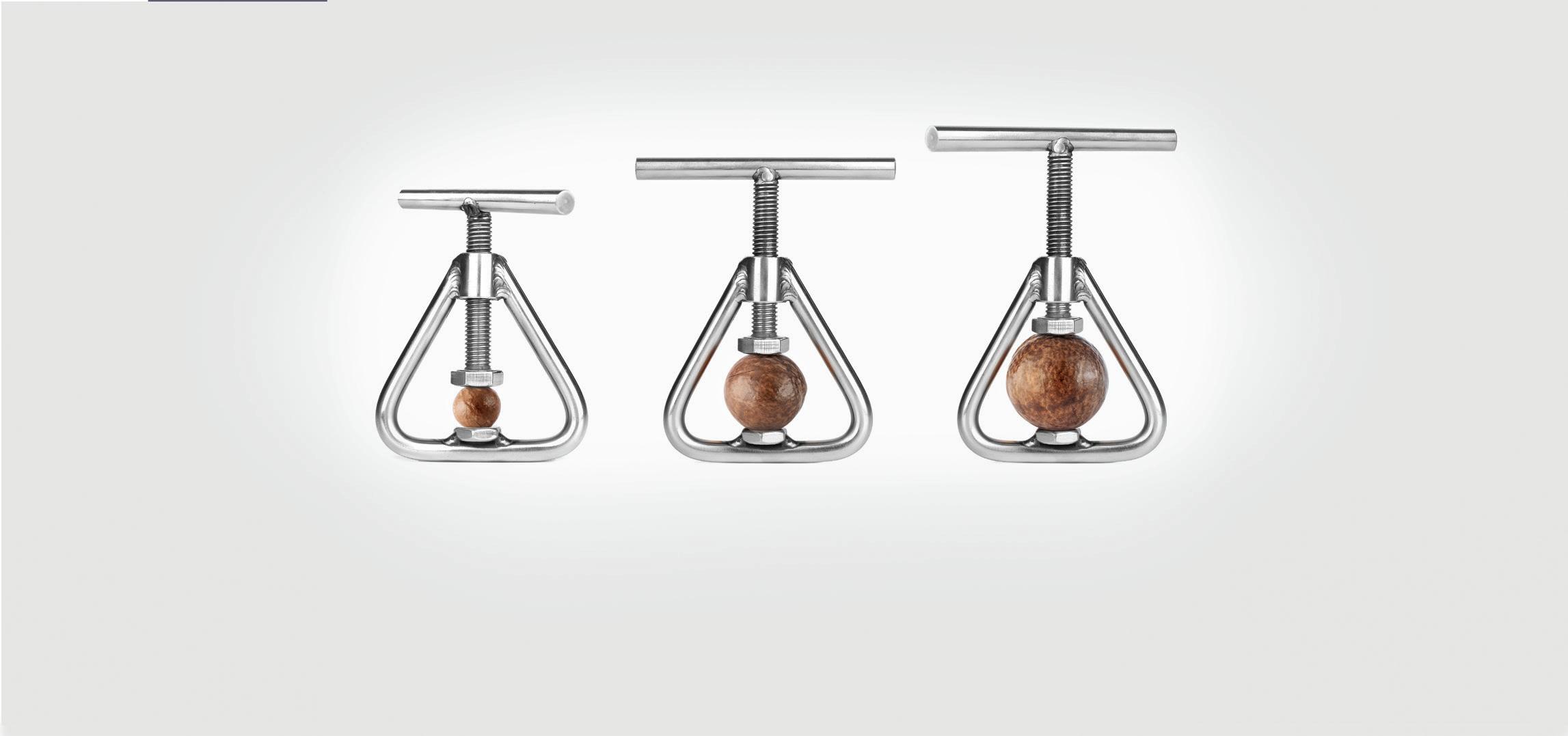
4 minute read
PROMOTION
The potential for the export market is now notable with a growing interest for ASDF selections in Europe.
It is Amorentia Sweet Dragon Fruit season
LAUREN STREVER
The reddish-pink fruit exterior with green scales looks exotic and perhaps this is the reason why it has its mystical name. The fruit encloses white, pink, red or purple pulp which, more recently, is deliciously sweet and enormously refreshing. When looking in store for fruit, ask for the fruit bearing the little red Amorentia tree sticker - because that is the mark of taste excellence.
DRAGON FRUIT PLANTING material (only cultivars that produce sweet tasting fruit) is available from Amorentia Sweet Dragon Fruit (ASDF) Nursery for the commercial grower. The fully rooted plants cost 20% less than the price of macadamia trees and 70% less than avocado trees. ASDF’s crop modelling shows the potential for a positive cash flow in year 3 or 4, rather than year 7 to 8 as is the case for maca- damia and avocado production. The initial capital cost to develop per hectare of dragon fruit is higher than these crops, but the return on investment makes it an attractive option to commercial growers in subtropical and temperate areas which are frost free. The development of ASDF hectares is growing steadily and the ASDF marketing company is encouraged by the leap in the demand for the exotic superfood. Last year, COVID-19 certainly put a spanner in the works for the Dragon Fruit industry at large. Trials with certain retailers were abandoned, while tastings and events had to be canceled. Consumers are starting to pay attention to dragon fruit and more importantly, there is a growing confidence due to the availability of sweet-tasting selections in a variety of local outlets – from SA's top supermarkets, mini markets, municipal markets to online health food markets. The local price thus far has remained solid. The reason why previous attempts to market Dragon Fruit have not succeeded is due to the old selections of poor tasting fruit. In the case of these exciting, sweet cultivars, the marketing is focused, showcasing the superior taste of the trademarked ASDF selections. Previously there was little effort to differentiate any exciting, dynamic and sweet-tasting fruit from older, bland tasting cultivars. The potential for the export market is now notable with interest for ASDF selections in Europe. With an already flourishing market in Vietnam producing a million tons of Dragon Fruit annually, the evidence is clear that as our production increases, there is an opportunity for South African producers to supply into the Northern Hemisphere. It is too early to tell, but it appears that, despite the increase in hectarage, supply is down, with many growers in the northern regions of South Africa having experienced incredible summer rains. The Dragon Fruit flower opens overnight and closes the next morning, leaving a very small window for pollination to occur. The plants produce a series of flowers throughout a season, therefore with seemingly drier months ahead, there is hope for an opportunity of an increase in production for the remainder of the season.

Also known as Pitaya, dragon fruit contains certain beneficial vitamins and minerals.
In-field
Because Dragon Fruit is a member of the cactus family, the water requirements are considerably lower than for macadamias, avocados and citrus. They require a third of the water, if not less. ASDF growers have recorded their irrigation requirements as low as 700 cubic meters per ha per year, depending on the rainfall in the area. Nutrition requirements are being tweaked all the time as certain methods produce different results in different regions, highlighting the impact of microclimates, like with most commercial crops. Sweet Dragon Fruit is a super food, packed with health benefits and is easy to eat in a variety of exciting ways.
Health benefits
• Lowers blood sugar levels and blood pressure. • Strengthens bones and teeth. • Promotes healthy blood and tissue. • Strengthens the immune system. • It slows down the aging process. • Reduces inflammation. • Prevents cancer.
Also known as Pitaya, dragon fruit contains certain beneficial vitamins and minerals. The fruit is rich in antioxidants, vitamins B1, B2, B3 and C, polyunsaturated fatty acids, caro- tene, protein, calcium, iron and phosphorus.
How to prepare your Sweet Dragon Fruit:
• Slice in half and scoop the flesh out with a spoon. • Peel and dice into blocks. • Enjoy alone, in a fruit salad or a garden salad. • Blend into a smoothie or a juice. • Make ice lollies or ice cream. • Deserts.











